Electrolyte Additives In Lithium-ion Batteries
SELLA; Eran ; et al.
U.S. patent application number 16/291031 was filed with the patent office on 2019-06-27 for electrolyte additives in lithium-ion batteries. This patent application is currently assigned to StoreDot Ltd.. The applicant listed for this patent is StoreDot Ltd.. Invention is credited to Mor Shmuel ARMON, Eran SELLA.
| Application Number | 20190198912 16/291031 |
| Document ID | / |
| Family ID | 66951522 |
| Filed Date | 2019-06-27 |

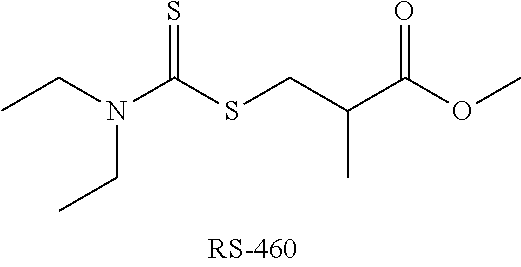










View All Diagrams
| United States Patent Application | 20190198912 |
| Kind Code | A1 |
| SELLA; Eran ; et al. | June 27, 2019 |
ELECTROLYTE ADDITIVES IN LITHIUM-ION BATTERIES
Abstract
Lithium ion batteries and electrolytes therefor are provided, which include electrolyte additives having dithioester functional group(s) that stabilize the SEI (solid-electrolyte interface) at the surfaces of the anode material particles, and/or stabilize the CEI (cathode electrolyte interface) at the surfaces of the cathode material particles, and/or act as oxygen scavengers to prevent cell degradation. The electrolyte additives having dithioester functional group(s) may function as polymerization controlling and/or chain transfer agents that regulate the level of polymerization of other electrolyte components, such as VC (vinyl carbonate) and improve the formation and operation of the batteries. The lithium ion batteries may have metalloid-based anodes--including mostly Si, Ge and/or Sn as anode active material particles.
| Inventors: | SELLA; Eran; (Tel-Aviv, IL) ; ARMON; Mor Shmuel; (Ramat-Gan, IL) | ||||||||||
| Applicant: |
|
||||||||||
|---|---|---|---|---|---|---|---|---|---|---|---|
| Assignee: | StoreDot Ltd. Herzeliya IL |
||||||||||
| Family ID: | 66951522 | ||||||||||
| Appl. No.: | 16/291031 | ||||||||||
| Filed: | March 4, 2019 |
Related U.S. Patent Documents
| Application Number | Filing Date | Patent Number | ||
|---|---|---|---|---|
| 16243190 | Jan 9, 2019 | |||
| 16291031 | ||||
| 15844689 | Dec 18, 2017 | 10199677 | ||
| 16243190 | ||||
| 16157128 | Oct 11, 2018 | |||
| 15844689 | ||||
| 15844689 | Dec 18, 2017 | 10199677 | ||
| 16157128 | ||||
| 15447889 | Mar 2, 2017 | 10096859 | ||
| 15844689 | ||||
| 15447784 | Mar 2, 2017 | |||
| 15447889 | ||||
| 62319341 | Apr 7, 2016 | |||
| 62337416 | May 17, 2016 | |||
| 62371874 | Aug 8, 2016 | |||
| 62401214 | Sep 29, 2016 | |||
| 62401635 | Sep 29, 2016 | |||
| 62421290 | Nov 13, 2016 | |||
| 62426625 | Nov 28, 2016 | |||
| 62427856 | Nov 30, 2016 | |||
| 62435783 | Dec 18, 2016 | |||
| 62441458 | Jan 2, 2017 | |||
| 62319341 | Apr 7, 2016 | |||
| 62337416 | May 17, 2016 | |||
| 62371874 | Aug 8, 2016 | |||
| 62401214 | Sep 29, 2016 | |||
| 62401635 | Sep 29, 2016 | |||
| 62421290 | Nov 13, 2016 | |||
| 62426625 | Nov 28, 2016 | |||
| 62427856 | Nov 30, 2016 | |||
| 62435783 | Dec 18, 2016 | |||
| 62441458 | Jan 2, 2017 | |||
| 62482450 | Apr 6, 2017 | |||
| 62482891 | Apr 7, 2017 | |||
| 62550711 | Aug 28, 2017 | |||
| 62711639 | Jul 30, 2018 | |||
| 62804778 | Feb 13, 2019 | |||
| Current U.S. Class: | 1/1 |
| Current CPC Class: | H01M 10/0569 20130101; H01M 4/134 20130101; H01M 10/052 20130101; H01M 10/0567 20130101; H01M 4/136 20130101; H01M 10/4235 20130101; H01M 2300/0051 20130101; H01M 10/0525 20130101; H01M 4/131 20130101; Y02T 10/70 20130101 |
| International Class: | H01M 10/052 20060101 H01M010/052; H01M 10/0569 20060101 H01M010/0569 |
Claims
1. A lithium ion battery comprising: at least one anode comprising active material based on Si, Ge and/or Sn, at least one cathode comprising active material based on at least one formulation comprising lithium iron-phosphorus (LFP) oxide or lithium metal oxide (LiMeO), wherein Me is one or more metal selected from nickel, cobalt, manganese and aluminum and Li and 0 represent one or more respective lithium and oxygen atoms, and electrolyte comprising: solvent comprising at least one linear carbonate and/or ester and at least one cyclic carbonate and/or ester, at least one dissolved lithium salt, and at least one additive that is represented by formula (I): ##STR00021## wherein: Z.sup.1 is halide, alkyl, haloalkyl, aryl, alkenyl, alkynyl, cycloalkyl, heteroaryl, heteroalicyclic, hydroxyl, alkoxy, aryloxy, heteroaryloxy, NR.sup.1R.sup.2, benzyl, thiol, arylthiol, alkylthiol, heteroarylthiol, a polymeric moiety or an oligomeric moiety; Z.sup.2 is alkyl, haloalkyl, alkyl-C(.dbd.O)--O--R.sup.1, benzyl, aryl, cycloalkyl, alkenyl, alkynyl, heteroalicyclic, heteroaryl, a polymeric moiety, an oligomeric moiety or S--C(.dbd.S)--Z.sup.1; R.sup.1 and R.sup.2 are each independently H, alkyl, haloalkyl, cycloalkyl, benzyl, aryl, heteroalicyclic, heteroaryl, polymeric moiety or an oligomeric moiety 1; and each of the alkyl, haloalkyl, aryl, benzyl, alkenyl, alkynyl, cycloalkyl, heteroaryl, heteroalicyclic, alkoxy, aryloxy, heteroaryloxy, polymeric moiety, oligomeric moiety arylthiol, alkylthiol or heteroarylthiol of Z.sup.1, Z.sup.2, R.sup.1 or R.sup.2 is optionally substituted with one or more of alkyl, haloalkyl, alkenyl, alkynyl, heteroalicyclic, heteroaryl, O--P(.dbd.O)(OR.sup.1).sub.2, trihalomethyl, S(.dbd.O)--R.sup.1, S(.dbd.O).sub.2--R.sup.1, S(.dbd.O).sub.2--NR.sup.1R.sup.2, halide, cycloalkyl, alkoxy, nitro, cyano, NR.sup.1R.sup.2, C(O)NR.sup.1R.sup.2, N(R.sup.1)C(.dbd.O)--R.sup.2, hydroxy, alkylthiol, thiol, arylthiol, heteroarylthiol, C(.dbd.O)--OR.sup.1, C(.dbd.O)--R.sup.1, aryl, aryloxy, heteroaryloxy or any combination thereof.
2. The lithium ion battery of claim 1, wherein Z.sup.2 is alkyl, haloalkyl, aryl, alkenyl, alkynyl, a polymeric moiety having a carbon chain or an oligomeric moiety having a carbon chain.
3. The lithium ion battery of claim 1, wherein Z.sup.i is heteroaryl, heteroalicyclic, hydroxyl, alkoxy, aryloxy, heteroaryloxy, NR.sup.1R.sup.2, thiol, arylthiol, alkylthiol, heteroarylthiol, a polymeric moiety with an electron donating group or an oligomeric moiety with an electron donating group.
4. The lithium ion battery of claim 3, wherein Z.sup.i is NR.sup.1R.sup.2.
5. The lithium ion battery of claim 3, wherein Z.sup.2 is alkyl, haloalkyl, benzyl, aryl, cycloalkyl, alkenyl, alkynyl, a polymeric moiety having a carbon chain or an oligomeric moiety having a carbon chain.
6. The lithium ion battery of claim 5, wherein the at least one additive is represented by: ##STR00022##
7. The lithium ion battery of claim 1, wherein the solvent comprises at least one of DMC (dimethyl carbonate), DEC (diethyl carbonate), EMC (ethyl methyl carbonate), EC (ethylene carbonate), EB (ethyl butyrate) and BA (butyl acetate).
8. The lithium ion battery of claim 1, further comprising at least one of VC (vinylene carbonate) and FEC (fluoroethylene carbonate).
9. The lithium ion battery of claim 8, wherein the at least one additive is represented by: ##STR00023##
10. The lithium ion battery of claim 1, wherein the at least one additive is represented by: ##STR00024##
11. The lithium ion battery of claim 1, comprising cathode active material based on at least one formulation comprising lithium iron-phosphorus (LFP) oxide, lithium Nickel-Manganese-Cobalt (NMC) oxide, modified Li-NMC oxide and/or lithium Nickel Cobalt Aluminum oxide (NCA).
12. A lithium ion battery comprising: at least one anode comprising active material based on Si, Ge and/or Sn, at least one cathode comprising active material based on at least one formulation comprising lithium iron-phosphorus (LFP) oxide or lithium metal oxide (LiMeO), wherein Me is one or more metal selected from nickel, cobalt, manganese and aluminum and Li and 0 represent one or more respective lithium and oxygen atoms, and electrolyte comprising: solvent comprising at least one linear carbonate and/or ester and at least one cyclic carbonate and/or ester, at least one dissolved lithium salt, and at least one additive represented by formula (Ia): ##STR00025## wherein R.sup.1 and R.sup.2 are each independently H, alkyl, haloalkyl, cycloalkyl, aryl, heteroalicyclic, benzyl, heteroaryl, polymeric moiety or an oligomeric moiety or R.sup.1, R.sup.2 and the adjacent nitrogen form a heteroaryl or a heteroalicyclic ring; R.sup.3 is H, alkyl, haloalkyl, alkenyl, alkynyl, cycloalkyl, aryl, heteroalicyclic heteroaryl, alkoxy, hydroxy, O--P(.dbd.O)(OR.sup.1).sub.2, thiol, alkylthiol, aryloxy, heteroaryloxy, arylthiol, heteroarylthiol, nitro, halide, trihalomethyl, cyano, benzyl, C(O)NR.sup.1R.sup.2, NR.sup.1R.sup.2, N(R.sup.1)C(.dbd.O)--R.sup.2, C(.dbd.O)--OR.sup.1, S(.dbd.O)--R.sup.1, S(.dbd.O).sub.2--R.sup.1 or S(.dbd.O).sub.2--NR.sup.1R.sup.2; R.sup.4 is H, alkyl, haloalkyl, cycloalkyl, aryl, heteroalicyclic, benzyl or heteroaryl; each of the alkyl, haloalkyl, cycloalkyl, aryl, benzyl, heteroaryl, alkenyl, alkynyl, heteroalicyclic, alkoxy, alkylthiol, heteroarylthiol, aryloxy, heteroaryloxy or arylthiol of R.sup.1, R.sup.2, R.sup.3 or R.sup.4 is optionally substituted with one or more of alkyl, haloalkyl, alkenyl, alkynyl, heteroalicyclic, heteroaryl, O--P(.dbd.O)(OR.sup.1).sub.2, trihalomethyl, cyano, S(.dbd.O)--R.sup.1, S(.dbd.O).sub.2--R.sup.1, S(.dbd.O).sub.2--NR.sup.1R.sup.2, halide, cycloalkyl, alkoxy, nitro, NR.sup.1R.sup.2, C(O)NR.sup.1R.sup.2, N(R.sup.1)C(.dbd.O)--R.sup.2, hydroxy, alkylthiol, thiol, arylthiol, heteroarylthiol, C(.dbd.O)--OR.sup.1, C(.dbd.O)--R.sup.1, aryl, aryloxy, heteroaryloxy or any combination thereof; and n is an integer between 1 and 10.
13. The lithium ion battery of claim 12, wherein the solvent comprises at least one of DMC (dimethyl carbonate), DEC (diethyl carbonate), EMC (ethyl methyl carbonate), EC (ethylene carbonate), EB (ethyl butyrate) and BA (butyl acetate).
14. The lithium ion battery of claim 12, further comprising at least one of VC (vinylene carbonate) and, FEC (fluoroethylene carbonate).
15. The lithium ion battery of claim 14, wherein the at least one additive is represented by: ##STR00026##
16. The lithium ion battery of claim 12, comprising cathode active material based on at least one formulation comprising lithium iron-phosphorus (LFP) oxide, lithium Nickel-Manganese-Cobalt (NMC), modified Li-NMC oxide and/or lithium Nickel Cobalt Aluminum oxide (NCA).
17. A lithium ion battery comprising: at least one anode comprising active material based on Si, Ge and/or Sn, at least one cathode comprising active material based on at least one formulation comprising lithium iron-phosphorus (LFP) oxide or lithium metal oxide (LiMeO), wherein Me is one or more metal selected from nickel, cobalt, manganese and aluminum and Li and 0 represent one or more respective lithium and oxygen atoms, and electrolyte comprising: solvent comprising at least one linear carbonate and/or ester and at least one cyclic carbonate and/or ester, at least one dissolved lithium salt, and at least one additive represented by: ##STR00027##
18. The lithium ion battery of claim 17, wherein the solvent comprises at least one of DMC (dimethyl carbonate), DEC (diethyl carbonate), EMC (ethyl methyl carbonate), EC (ethylene carbonate), EB (ethyl butyrate) and BA (butyl acetate).
19. The lithium ion battery of claim 17, further comprising at least one of VC (vinylene carbonate) and, FEC (fluoroethylene carbonate).
20. The lithium ion battery of claim 17, comprising cathode active material based on at least one formulation comprising lithium iron-phosphorus (LFP) oxide, lithium Nickel-Manganese-Cobalt (NMC) oxide, modified Li-NMC oxide and/or lithium Nickel Cobalt Aluminum oxide (NCA).
Description
CROSS REFERENCE TO RELATED APPLICATIONS
[0001] This application is a continuation-in-part of U.S. patent application Ser. No. 16/243,190, filed on Jan. 9, 2019, which is a continuation-in-part of U.S. patent application Ser. No. 15/844,689, filed on Dec. 18, 2017; this application is also a continuation-in-part of U.S. patent application Ser. No. 16/157,128, filed on Oct. 11, 2018, which is a continuation of U.S. patent application Ser. No. 15/844,689, filed on Dec. 18, 2017; U.S. patent application Ser. No. 15/844,689 is a continuation-in-part of U.S. application Ser. No. 15/447,889, filed on Mar. 2, 2017, and a continuation-in-part of U.S. application Ser. No. 15/447,784, filed on Mar. 2, 2017, both claiming the benefit of U.S. Provisional Application Nos. 62/319,341, filed Apr. 7, 2016, 62/337,416, filed May 17, 2016, 62/371,874, filed Aug. 8, 2016, 62/401,214, filed Sep. 29, 2016, 62/401,635, filed Sep. 29, 2016, 62/421,290, filed Nov. 13, 2016, 62/426,625, filed Nov. 28, 2016, 62/427,856, filed Nov. 30, 2016, 62/435,783, filed Dec. 18, 2016 and 62/441,458, filed Jan. 2, 2017; U.S. application Ser. No. 15/844,689 further claims the benefit of U.S. Provisional Application No. 62/482,450, filed on Apr. 6, 2017, 62/482,891, filed on Apr. 7, 2017 and 62/550,711, filed on Aug. 28, 2017; this application further claims the benefit of U.S. Provisional Patent Application Nos. 62/711,639, filed on Jul. 30, 2018 and 62/804,778, filed on Feb. 13, 2019; all of which are hereby incorporated by reference.
BACKGROUND OF THE INVENTION
1. Technical Field
[0002] The present invention relates to the field of energy storage devices, and more particularly, to electrolytes and electrolyte additives for lithium ion batteries.
2. Discussion of Related Art
[0003] Lithium ion batteries are used for a growing range of applications, as their safety and performance are improved. The electrolytes of lithium ion batteries are an important component that affects their safety and performance.
SUMMARY OF THE INVENTION
[0004] The following is a simplified summary providing an initial understanding of the invention. The summary does not necessarily identify key elements nor limit the scope of the invention, but merely serves as an introduction to the following description.
[0005] One aspect of the present invention provides lithium-ion batteries having electrolytes with additive(s) having dithioester functional group(s).
[0006] For example, one aspect of the present invention provides lithium ion battery comprising: at least one anode comprising active material based on Si, Ge and/or Sn, at least one cathode comprising active material based on at least one formulation comprising lithium Nickel-Manganese-Cobalt (NMC) and/or at least one formulation comprising modified Li-NMC (Li.sub.wNi.sub.xMn.sub.yCo.sub.zO.sub.2) and/or at least one formulation comprising LiMeO wherein Me comprises one or more of Ni, Co, Mn, Al and Li and O comprise one or more respective lithium and oxygen atoms, and/or at least one formulation comprising lithium Nickel Cobalt Aluminum oxide (NCA), and electrolyte comprising: solvent comprising at least one linear carbonate and/or ester and at least one cyclic carbonate and/or ester, at least one dissolved lithium salt, and at least one additive that is represented by formula (I):
##STR00001## [0007] wherein: [0008] Z.sup.1 is halide, alkyl, haloalkyl, aryl, alkenyl, alkynyl, cycloalkyl, heteroaryl, heteroalicyclic, hydroxyl, alkoxy, aryloxy, heteroaryloxy, NR.sup.1R.sup.2, benzyl, thiol, arylthiol, alkylthiol, heteroarylthiol, a polymeric moiety or an oligomeric moiety; [0009] Z.sup.2 is alkyl, haloalkyl, benzyl, aryl, cycloalkyl, alkenyl, alkynyl, heteroalicyclic, heteroaryl, a polymeric moiety, an oligomeric moiety or S--C(.dbd.S)--Z.sup.1; [0010] R.sup.1-R.sup.2 are each independently H, alkyl, haloalkyl, cycloalkyl, benzyl, aryl, heteroalicyclic, heteroaryl, polymeric moiety or an oligomeric moiety; and [0011] each of the alkyl, haloalkyl, aryl, benzyl, alkenyl, alkynyl, cycloalkyl, heteroaryl, heteroalicyclic, alkoxy, aryloxy, heteroaryloxy, polymeric moiety, oligomeric moiety arylthiol, alkylthiol or heteroarylthiol of Z.sup.1, Z.sup.2, R.sup.1 or R.sup.2 is optionally substituted with one or more of alkyl, haloalkyl, alkenyl, alkynyl, heteroalicyclic, heteroaryl, O--P(.dbd.O)(OR.sup.1).sub.2, trihalomethyl, S(.dbd.O)--R.sup.1, S(.dbd.O).sub.2--R.sup.1, S(.dbd.O).sub.2--NR.sup.1R.sup.2, halide, cycloalkyl, alkoxy, nitro, cyano, NR.sup.1R.sup.2, C(O)NR.sup.1R.sup.2, N(R.sup.1)C(.dbd.O)--R.sup.2, hydroxy, alkylthiol, thiol, arylthiol, heteroarylthiol, C(.dbd.O)--OR.sup.1, C(.dbd.O)--R.sup.1, aryl, aryloxy, heteroaryloxy or any combination thereof.
[0012] These, additional, and/or other aspects and/or advantages of the present invention are set forth in the detailed description which follows; possibly inferable from the detailed description; and/or learnable by practice of the present invention.
BRIEF DESCRIPTION OF THE DRAWINGS
[0013] For a better understanding of embodiments of the invention and to show how the same may be carried into effect, reference will now be made, purely by way of example, to the accompanying drawings in which like numerals designate corresponding elements or sections throughout.
[0014] In the accompanying drawings:
[0015] FIG. 1 provides experimental results indicating improvements achieved by using polymerization controlling agents as additives, according to some embodiments of the invention.
[0016] FIG. 2 provides a scatter plot of cycle life versus capacity for the experimental results, according to some embodiments of the invention.
[0017] FIG. 3 provides a scatter plot of cell thickness versus cycle life for the experimental results, according to some embodiments of the invention.
DETAILED DESCRIPTION OF THE INVENTION
[0018] In the following description, various aspects of the present invention are described. For purposes of explanation, specific configurations and details are set forth in order to provide a thorough understanding of the present invention. However, it will also be apparent to one skilled in the art that the present invention may be practiced without the specific details presented herein. Furthermore, well known features may have been omitted or simplified in order not to obscure the present invention. With specific reference to the drawings, it is stressed that the particulars shown are by way of example and for purposes of illustrative discussion of the present invention only, and are presented in the cause of providing what is believed to be the most useful and readily understood description of the principles and conceptual aspects of the invention. In this regard, no attempt is made to show structural details of the invention in more detail than is necessary for a fundamental understanding of the invention, the description taken with the drawings making apparent to those skilled in the art how the several forms of the invention may be embodied in practice.
[0019] Before at least one embodiment of the invention is explained in detail, it is to be understood that the invention is not limited in its application to the details of construction and the arrangement of the components set forth in the following description or illustrated in the drawings. The invention is applicable to other embodiments that may be practiced or carried out in various ways as well as to combinations of the disclosed embodiments. Also, it is to be understood that the phraseology and terminology employed herein are for the purpose of description and should not be regarded as limiting.
[0020] Embodiments of the present invention provide efficient and economical methods and mechanisms for improving the cycling lifetime of lithium ion batteries and thereby provide improvements to the technological field of energy storage.
[0021] Lithium ion batteries and electrolytes therefor are provided, which include electrolyte additives having dithioester functional group(s) that stabilize the SEI (solid-electrolyte interface) at the surfaces of the anode material particles, and/or stabilize the CEI (cathode electrolyte interface) at the surfaces of the cathode material particles, and/or act as oxygen scavengers to prevent cell degradation. The electrolyte additives having dithioester functional group(s) may function as polymerization controlling and/or chain transfer agents that regulate the level of polymerization of other electrolyte components, such as VC (vinyl carbonate) and improve the formation and operation of the batteries. The lithium ion batteries may have metalloid-based anodes--including mostly Si, Ge and/or Sn as anode active material particles.
[0022] In various embodiments of lithium-ion batteries, e.g., in batteries having metalloid-based anode materials, electrolytes may comprise olefinic additives such as VC and/or olefin moieties which are formed in-situ during cell formation and cycling. Examples for electrolyte are disclosed e.g., in U.S. Pat. No. 10,096,859, incorporated herein by reference in its entirety. In certain embodiments, electrolytes may comprise a large proportion, e.g., 10%, 20%, 30% or more of VC and/or FEC as prominent cyclic carbonate compound, as disclosed e.g., in U.S. Pat. No. 10,199,677, incorporated herein by reference in its entirety. In certain embodiments, electrolytes may comprise linear solvent comprising at least one three-carbon and/or four-carbon chain ester, cyclic carbonate solvent and at least one lithium salt, as disclosed e.g., in U.S. patent application Ser. No. 16/243,190, incorporated herein by reference in its entirety.
[0023] During formation, olefins (of the olefin additives and/or of the olefin moieties) polymerize to poly-olefins (in radical polymerization) and are attached to the anode as part of the SEI. "Polymerization controlling agents", defined herein as compounds that control the chain length of the poly-olefins and/or stop olefin polymerization--may be added to the electrolyte. Non-limiting examples of polymerization controlling agents include radical scavengers and chain transfer agents.
[0024] Radical scavenger(s), used as such polymerization controlling agent, may be added to the electrolyte after the formation stage (at an electrolyte replenishment stage)--to stop olefin polymerization. For example, BHT (Butylated hydroxytoluene) and/or TEMPO ((2,2,6,6-Tetramethylpiperidin-1-yl)oxyl) may be added to the electrolyte after the formation stage.
[0025] Alternatively or complementarily, "chain transfer agents", defined herein as compounds comprising a weak bond (e.g. --C(.dbd.S)--S--moiety, i.e. a dithioester functional group) which facilitates a chain transfer reaction (usually within a polymerization process/reaction)--can be used as polymerization controlling agents, to control chain length of the poly-olefins. Non-limiting examples of chain transfer agents include dithioester compounds, thiols, haloalkanes (e.g. perfluoroiodoalkanes), organoselenium compounds (e.g. diphenyldiselenide), alkyl telluride compounds, organostibine compounds and iniferter agents (which simultaneously act as initiators, transfer agents, and terminators; e.g. dithiocarbamate compounds). In some embodiments, non-limiting examples of mechanisms involving the chain transfer agents include: reversible addition fragmentation chain transfer (RAFT, using e.g. the dithioester compounds), iodine transfer polymerization (ITP, using e.g. the perfluoroiodoalkanes), Selenium-centered radical-mediated polymerization (using the organoselenium compounds), Telluride-mediated polymerization (TERP, using e.g. the alkyl telluride compounds), stibine mediated polymerization (using the organostibine compounds) and controlled free radical iniferter polymerization (using iniferter agents).
[0026] Without being bound by any mechanism or theory, it is contemplated that polymerization controlling agents may be used to provide any of the following advantages: (i) control the chain lengths/molecular weights and distribution thereof, of the poly-olefins (e.g., poly-VC), (ii) prevent continuous occurrence of the reaction (which consumes electrolyte, reduces the ionic conductivity of the electrolyte and reduces the electronic conductivity of the anode material particles), and related parasitic reactions. Specifically, chain transfer agents (or comparable compounds and processes) and/or radical scavengers may be used to stop the polymerization at specified chain lengths that are optimized with respect to battery operation and performance with respect to any of their cycle life, charging/discharging rates, safety and/or capacity.
[0027] Without being bound by any mechanism or theory, at least some of the disclosed compounds may improve the cycling lifetime by at least partly providing a passivation or protection layer on cathode active material particles and/or on the cathode, stabilizing the CEI--cathode electrolyte interface.
[0028] Without being bound by any mechanism or theory, at least some of the disclosed compounds may oxidize before electrolyte components, anode components and/or cathode components oxidize, and so provide protection to any of these components. In certain embodiments, at least some of the disclosed compounds may operate as oxygen scavengers, removing O.sub.2 that is left in the cell or that is being produced at small amounts during the operation of the cell before it damages other cell components.
[0029] It is noted that disclosed compounds may be used with cells comprising any of the anode types and cathode types listed above, as well as with various electrolyte compositions.
[0030] In certain embodiments, cells with high VC proportion and polymerization controlling agents were shown to increase cycling lifetime of the respective cells by 50-100%, providing a significant progress in the field of fast charging lithium ion batteries. For example, the results presented below indicate the efficiency of polymerization controlling agents in this respect.
[0031] As a non-limiting example of a polymerization controlling agent, the molecule RS-460, was used in the following experiment. In certain embodiments, various other polymerization controlling agents, may be used as additives, as disclosed below (e.g., formula (I) and (II)).
##STR00002##
[0032] It is emphasized that disclosed embodiments and the results are not bound by theory and are not limited to the operation mechanism of RS-460 as a polymerization controlling agent. In various embodiments, RS-460 and/or related compounds may be advantageous, e.g., for increasing the cycling lifetime of the respective batteries through any of a range of surface reactions involved in the process of the SEI (solid electrolyte interphase) layer, so that RS-460 may at least partly be used as an SEI-forming additive. Alternatively or complementarily, RS-460 may at least partly decompose and any of its decomposition products may be operative as an SEI-forming additive. In various embodiments, RS-460 and/or related compounds may be advantageous, e.g., in modifying electrolyte components in a different way than through the chain transfer mechanism, e.g., reacting with double bonds in electrolyte components such as VC and/or olefins, and/or by affecting reaction products of electrolyte components during SEI formation and/or with SEI components, e.g., by promoting polymerization of double bonds to change the chemical composition of the electrolyte and/or of the SEI. In certain embodiments, RS-460 and/or its decomposition products and/or related compounds may be advantageous, e.g., for preventing or attenuating various parasitic reactions (via degenerative radical state) in the electrolyte and/or in the SEI during battery formation and/or operation. In certain embodiments, RS-460 and/or related compounds may be advantageous, e.g., for scavenging various by-products of the reactions in the operating battery, such operating as an H.sub.2O/HF scavenger. In certain embodiments, RS-460 and/or related compounds may be advantageous in electrochemical processes, in addition or in place of their advantages in chemical processes. For example, RS-460 and/or related compounds may affect the surface potential and/or the voltage during cell operation, and increase the cell cycling lifetime through electrochemical effects.
[0033] FIG. 1 provides experimental results indicating improvements achieved by using polymerization controlling agents as additives, according to some embodiments of the invention. The experiment was designed to contain four groups with different concentrations of polymerization controlling agents as additives. The first group, composed of three full cells, served as control, running at default parameters (1 Ah cells, 6.5 ml of EL 1255 electrolyte composed of 3/3.5/3.5 of VC (vinylene carbonate)/EB (ethyl butyrate)/BA (butyl acetate) and 1M LiPF.sub.6, same formation and cycling schemes, see e.g., below, and 15 bar pressure applied to the pouches over metal plates) with no polymerization controlling agents as inhibitors. In the other three groups, each containing six full cell pouches (and an additional pouch that is run for half the cycling lifetime, used for understanding the degradation mechanisms), three different electrolyte concentrations of polymerization controlling agents as additives were used, namely 0.15%, 0.57% and 1.1%. The electrolyte was filled in two steps, before formation 5.6 ml of electrolyte were filled, with no inhibitors, for all groups, and after degassing additional 0.9 ml of electrolyte were added, with inhibitor concentration calculated to generate the final desired concentrations listed above. Other running parameters were the standard "zero-series" for all cells. The cells were assembled with standard parameters in C:A ratio range of 1.01-0.95, and calculated capacity range of 2178-2103 mAh and 6.5 ml of EL1255 electrolyte. In the formation procedure, the cells were charged up to 4V, at varying currents (typically starting at a very low current that corresponds to a charging rate of C/1000 and increasing the current as the cell charges and the voltage rises, carried out similarly for all cells), following a discharge at C/10 down to 3V. The first cycle was following by four cycles of CCCV (constant current followed by constant voltage) charging to 4V and discharging to 3V, both at C/2. The cycles were performed under plates with applied pressure of 15 bar and completed with degassing and addition of 0.9 ml of electrolyte with additive concentration calculated to generate the final desired concentration as disclosed above. Standard cycling was performed with CCCV charging at 8 C up to 4.3V and discharging down to 3V. The voltage range and the charging rate were adjusted according to the capacity retention percent until EoL (end of life) was reached at 80% retention.
[0034] The formation procedure was similar for the four groups, prior to the addition of the polymerization controlling agent. It was found that the addition of the polymerization controlling agent decreased the high C capacity in a gradual manner as illustrated in the figure below, yet even the cells in the highest polymerization controlling agent concentration run in a capacity within the spec (>51.5%). The different high C capacity was taken into account in the cycle life comparison presented below, as it is known that even a few percent difference has an effect on cycling.
[0035] The low volumetric energy density observed on the highest polymerization controlling agent concentration (1.1%) may be understood as a result of both the lower 10 C capacity and the larger thickness of the cells as described above.
[0036] FIG. 2 provides a scatter plot of cycle life versus capacity for the experimental results, according to some embodiments of the invention. It is noted that the medium polymerization controlling agent concentration group (0.57%) yielded the best results in terms of cycling rate and cycling life time. The group of cells with the highest polymerization controlling agent concentration (1.1%) seems to present better performance than the control cell group (0%) and the low polymerization controlling agent concentration groups (0.15%), which display similar performances with relatively low cycling lifetime. However, presently but no direct comparison is enabled due to capacity difference and possibly other differences.
[0037] FIG. 3 provides a scatter plot of cell thickness versus cycle life for the experimental results, according to some embodiments of the invention. The results show that cells with the medium polymerization controlling agent concentration (0.57%) swelled less than cells with the higher polymerization controlling agent concentration (1.1%), and both groups ran a similar and larger number cycles than cells from the two other groups that swelled less (and are not directly comparable with regard to swelling). In a detailed examination of the individual pouches with respect to the number of cycles indicates no specific effect of the addition of polymerization controlling agent on the swelling of the pouches.
[0038] In conclusion, pouches with the medium and high polymerization controlling agent concentration of 0.57% and 1.1% displayed considerably longer cycling lifetimes, by ca. 55%, compared to the control group (without polymerization controlling agents) and compared to the group with lower polymerization controlling agent concentration (0.15%). The group with medium polymerization controlling agent concentration (0.57%) exhibited higher capacity than the group with high polymerization controlling agent concentration (1.1%).
[0039] The inventors suggest the following possible modifications of RS-460 that may retain its activity as polymerization controlling agent, possibly with different effective concentrations. In one embodiment, the polymerization controlling agents are dithioester compounds that may comprise molecules of the formula (I):
##STR00003##
wherein: Z.sup.1 is halide, alkyl, haloalkyl, aryl, alkenyl, alkynyl, cycloalkyl, heteroaryl, heteroalicyclic, hydroxyl, alkoxy, aryloxy, heteroaryloxy, NR.sup.1R.sup.2, benzyl, thiol, arylthiol, alkylthiol, heteroarylthiol, a polymeric moiety or an oligomeric moiety; Z.sup.2 is alkyl, haloalkyl, benzyl, aryl, cycloalkyl, alkenyl, alkynyl, heteroalicyclic, heteroaryl, a polymeric moiety, an oligomeric moiety or S--C(.dbd.S)--Z.sup.1; R.sup.1-R.sup.2 are each independently H, alkyl, haloalkyl, cycloalkyl, benzyl, aryl, heteroalicyclic, heteroaryl, polymeric moiety or an oligomeric moiety 1; and each of the alkyl, haloalkyl, aryl, benzyl, alkenyl, alkynyl, cycloalkyl, heteroaryl, heteroalicyclic, alkoxy, aryloxy, heteroaryloxy, polymeric moiety, oligomeric moiety arylthiol, alkylthiol or heteroarylthiol of Z.sup.1, Z.sup.2, R.sup.1 or R.sup.2 is optionally substituted with one or more of alkyl, haloalkyl, alkenyl, alkynyl, heteroalicyclic, heteroaryl, O--P(.dbd.O)(OR.sup.1).sub.2, trihalomethyl, S(.dbd.O)--R.sup.1, S(.dbd.O).sub.2--R.sup.1, S(.dbd.O).sub.2--NR.sup.1R.sup.2, halide, cycloalkyl, alkoxy, nitro, cyano, NR.sup.1R.sup.2, C(O)NR.sup.1R.sup.2, N(R.sup.1)C(.dbd.O)--R.sup.2, hydroxy, alkylthiol, thiol, arylthiol, heteroarylthiol, C(.dbd.O)--OR.sup.1, C(.dbd.O)--R.sup.1, aryl, aryloxy, heteroaryloxy or any combination thereof.
[0040] In certain embodiments, Z.sup.2 may be a carbon chain, e.g., alkyl, haloalkyl, aryl, alkenyl, alkynyl, a polymeric moiety having a carbon chain or an oligomeric moiety having a carbon chain.
[0041] In certain embodiments, Z.sup.1 may be an electron donating group, e.g., heteroaryl, heteroalicyclic, hydroxyl, alkoxy, aryloxy, heteroaryloxy, NR.sup.1R.sup.2, thiol, arylthiol, alkylthiol, heteroarylthiol, a polymeric moiety with an electron donating group or an oligomeric moiety with an electron donating group.
[0042] In another embodiment, the dithioester compounds may comprise molecules of the formula (Ia):
##STR00004##
wherein R.sup.1 and R.sup.2 are each independently H, alkyl, haloalkyl, cycloalkyl, aryl, heteroalicyclic, benzyl, heteroaryl, polymeric moiety or an oligomeric moiety or R.sup.1, R.sup.2 and the adjacent nitrogen form a heteroaryl or a heteroalicyclic ring; R.sup.3 is H, alkyl, haloalkyl, alkenyl, alkynyl, cycloalkyl, aryl, heteroalicyclic heteroaryl, alkoxy, hydroxy, O--P(.dbd.O)(OR.sup.1).sub.2, thiol, alkylthiol, aryloxy, heteroaryloxy, arylthiol, heteroarylthiol, nitro, halide, trihalomethyl, cyano, benzyl, C(O)NR.sup.1R.sup.2, NR.sup.1R.sup.2, N(R.sup.1)C(.dbd.O)--R.sup.2, C(.dbd.O)--OR.sup.1, S(.dbd.O)--R.sup.1, S(.dbd.O).sub.2--R.sup.1 or S(.dbd.O).sub.2--NR.sup.1R.sup.2; R.sup.4 is H, alkyl, haloalkyl, cycloalkyl, aryl, heteroalicyclic, benzyl or heteroaryl; each of the alkyl, haloalkyl, cycloalkyl, aryl, benzyl, heteroaryl, alkenyl, alkynyl, heteroalicyclic, alkoxy, alkylthiol, heteroarylthiol, aryloxy, heteroaryloxy or arylthiol of R.sup.1, R.sup.2, R.sup.3 or R.sup.4 is optionally substituted with one or more of alkyl, haloalkyl, alkenyl, alkynyl, heteroalicyclic, heteroaryl, O--P(.dbd.O)(OR.sup.1).sub.2, trihalomethyl, cyano, S(.dbd.O)--R.sup.1, S(.dbd.O).sub.2--R.sup.1, S(.dbd.O).sub.2--NR.sup.1R.sup.2, halide, cycloalkyl, alkoxy, nitro, NR.sup.1R.sup.2, C(O)NR.sup.1R.sup.2, N(R.sup.1)C(.dbd.O)--R.sup.2, hydroxy, alkylthiol, thiol, arylthiol, heteroarylthiol, C(.dbd.O)--OR.sup.1, C(.dbd.O)--R.sup.1, aryl, aryloxy, heteroaryloxy or any combination thereof; and n is an integer between 1 and 10.
[0043] In one embodiment, the dithioester compounds may comprise molecules of the formula (II):
##STR00005##
wherein Z.sup.1 is halide, alkyl, haloalkyl, aryl, alkenyl, alkynyl, cycloalkyl, heteroaryl, heteroalicyclic, hydroxyl, alkoxy, aryloxy, heteroaryloxy, NR.sup.1R.sup.2, benzyl, thiol, arylthiol, alkylthiol, heteroarylthiol, a polymeric moiety or an oligomeric moiety; R.sup.1 and R.sup.2 are each independently H, alkyl, haloalkyl, cycloalkyl, aryl, heteroalicyclic, benzyl, heteroaryl, polymeric moiety or an oligomeric moiety or R.sup.1, R.sup.2 and the adjacent nitrogen form a heteroaryl or a heteroalicyclic ring; each of the alkyl, haloalkyl, cycloalkyl, aryl, benzyl, heteroaryl, alkenyl, alkynyl, heteroalicyclic, alkoxy, alkylthiol, heteroarylthiol, aryloxy, heteroaryloxy or arylthiol of Z.sup.1, R.sup.1 or R.sup.2 is optionally substituted with one or more of alkyl, haloalkyl, alkenyl, alkynyl, heteroalicyclic, heteroaryl, O--P(.dbd.O)(OR.sup.1).sub.2, trihalomethyl, cyano, S(.dbd.O)--R.sup.1, S(.dbd.O).sub.2--R.sup.1, S(.dbd.O).sub.2--NR.sup.1R.sup.2, halide, cycloalkyl, alkoxy, nitro, NR.sup.1R.sup.2, C(O)NR.sup.1R.sup.2, N(R.sup.1)C(.dbd.O)--R.sup.2, hydroxy, alkylthiol, thiol, arylthiol, heteroarylthiol, C(.dbd.O)--OR.sup.1, C(.dbd.O)--R.sup.1, aryl, aryloxy, heteroaryloxy or any combination thereof; and L is a linker.
[0044] In another embodiment, the dithioester compounds may comprise molecules of the formula (IIa):
##STR00006##
wherein R.sup.1 and R.sup.2 are each independently H, alkyl, haloalkyl, cycloalkyl, aryl, heteroalicyclic, benzyl, heteroaryl, polymeric moiety or an oligomeric moiety or R.sup.1, R.sup.2 and the adjacent nitrogen form a heteroaryl or a heteroalicyclic ring; R.sup.3 is H, alkyl, haloalkyl, alkenyl, alkynyl, cycloalkyl, aryl, heteroalicyclic heteroaryl, alkoxy, hydroxy, O--P(.dbd.O)(OR.sup.1).sub.2, thiol, alkylthiol, aryloxy, heteroaryloxy, arylthiol, heteroarylthiol, nitro, halide, trihalomethyl, cyano, benzyl, C(O)NR.sup.1R.sup.2, NR.sup.1R.sup.2, N(R.sup.1)C(.dbd.O)--R.sup.2, C(.dbd.O)--OR.sup.1, S(.dbd.O)--R.sup.1, S(.dbd.O).sub.2--R.sup.1 or S(.dbd.O).sub.2--NR.sup.1R.sup.2; each of the alkyl, haloalkyl, cycloalkyl, aryl, benzyl, heteroaryl, alkenyl, alkynyl, heteroalicyclic, alkoxy, alkylthiol, heteroarylthiol, aryloxy, heteroaryloxy or arylthiol of R.sup.1, R.sup.2 or R.sup.3 is optionally substituted with one or more of alkyl, haloalkyl, alkenyl, alkynyl, heteroalicyclic, heteroaryl, O--P(.dbd.O)(OR.sup.1).sub.2, trihalomethyl, cyano, S(.dbd.O)--R.sup.1, S(.dbd.O).sub.2--R.sup.1, S(.dbd.O).sub.2--NR.sup.1R.sup.2, halide, cycloalkyl, alkoxy, nitro, NR.sup.1R.sup.2, C(O)NR.sup.1R.sup.2, N(R.sup.1)C(.dbd.O)--R.sup.2, hydroxy, alkylthiol, thiol, arylthiol, heteroarylthiol, C(.dbd.O)--OR.sup.1, C(.dbd.O)--R.sup.1, aryl, aryloxy, heteroaryloxy or any combination thereof; L is a linker; and n each is independently an integer between 1 and 10.
[0045] In another embodiment, the dithioester compounds may comprise molecules of the formula (IIb):
##STR00007##
wherein R.sup.1 and R.sup.2 are each independently H, alkyl, haloalkyl, cycloalkyl, aryl, heteroalicyclic, benzyl, heteroaryl, polymeric moiety or an oligomeric moiety or R.sup.1, R.sup.2 and the adjacent nitrogen form a heteroaryl or a heteroalicyclic ring; R.sup.3 is H, alkyl, haloalkyl, alkenyl, alkynyl, cycloalkyl, aryl, heteroalicyclic heteroaryl, alkoxy, hydroxy, O--P(.dbd.O)(OR.sup.1).sub.2, thiol, alkylthiol, aryloxy, heteroaryloxy, arylthiol, heteroarylthiol, nitro, halide, trihalomethyl, cyano, benzyl, C(O)NR.sup.1R.sup.2, NR.sup.1R.sup.2, N(R.sup.1)C(.dbd.O)--R.sup.2, C(.dbd.O)--OR.sup.1, S(.dbd.O)--R.sup.1, S(.dbd.O).sub.2--R.sup.1 or S(.dbd.O).sub.2--NR.sup.1R.sup.2; each of the alkyl, haloalkyl, cycloalkyl, aryl, benzyl, heteroaryl, alkenyl, alkynyl, heteroalicyclic, alkoxy, alkylthiol, heteroarylthiol, aryloxy, heteroaryloxy or arylthiol of R.sup.1, R.sup.2 or R.sup.3 is optionally substituted with one or more of alkyl, haloalkyl, alkenyl, alkynyl, heteroalicyclic, heteroaryl, O--P(.dbd.O)(OR.sup.1).sub.2, trihalomethyl, cyano, S(.dbd.O)--R.sup.1, S(.dbd.O).sub.2--R.sup.1, S(.dbd.O).sub.2--NR.sup.1R.sup.2, halide, cycloalkyl, alkoxy, nitro, NR.sup.1R.sup.2, C(O)NR.sup.1R.sup.2, N(R.sup.1)C(.dbd.O)--R.sup.2, hydroxy, alkylthiol, thiol, arylthiol, heteroarylthiol, C(.dbd.O)--OR.sup.1, C(.dbd.O)--R.sup.1, aryl, aryloxy, heteroaryloxy or any combination thereof; m is an integer between 1 and 10,000; and n each is independently an integer between 1 and 10.
[0046] In another embodiment, non-limiting examples of dithioester compounds include the following:
##STR00008## ##STR00009## ##STR00010## ##STR00011##
wherein m is an integer between 1 and 10,000.
[0047] In one embodiment, the dithioester compounds are polymeric, oligomeric or dendritic compounds comprising a polymeric, oligomeric or dendrimeric core and multiple dithioester moieties "arms" attached to the core, as may be represented by the following formula (III):
##STR00012##
wherein the core is a dendritic, oligomeric or polymeric moiety, e.g., having a carbon chain such as polyamide chains, polyester chains, or polyethylene chains; Z.sup.1 is halide, alkyl, haloalkyl, aryl, alkenyl, alkynyl, cycloalkyl, heteroaryl, heteroalicyclic, hydroxyl, alkoxy, aryloxy, heteroaryloxy, NR.sup.1R.sup.2, benzyl, thiol, arylthiol, alkylthiol, heteroarylthiol, a polymeric moiety or an oligomeric moiety; R.sup.1 and R.sup.2 are each independently H, alkyl, haloalkyl, cycloalkyl, aryl, heteroalicyclic, benzyl, heteroaryl, polymeric moiety or an oligomeric moiety or R.sup.1, R.sup.2 and the adjacent nitrogen form a heteroaryl or a heteroalicyclic ring; each of the alkyl, haloalkyl, cycloalkyl, aryl, benzyl, heteroaryl, alkenyl, alkynyl, heteroalicyclic, alkoxy, alkylthiol, heteroarylthiol, aryloxy, heteroaryloxy or arylthiol of Z.sup.1, R.sup.1 or R.sup.2 is optionally substituted with one or more of alkyl, haloalkyl, alkenyl, alkynyl, heteroalicyclic, heteroaryl, O--P(.dbd.O)(OR.sup.1).sub.2, trihalomethyl, cyano, S(.dbd.O)--R.sup.1, S(.dbd.O).sub.2--R.sup.1, S(.dbd.O).sub.2--NR.sup.1R.sup.2, halide, cycloalkyl, alkoxy, nitro, NR.sup.1R.sup.2, C(O)NR.sup.1R.sup.2, N(R.sup.1)C(.dbd.O)--R.sup.2, hydroxy, alkylthiol, thiol, arylthiol, heteroarylthiol, C(.dbd.O)--OR.sup.1, C(.dbd.O)--R.sup.1, aryl, aryloxy, heteroaryloxy or any combination thereof; and p is an integer between 3 and 1000.
[0048] In another embodiment, the polymeric, oligomeric or dendritic compounds are represented by the following non-limiting examples:
##STR00013##
[0049] Alternative known chain transfer agents and corresponding modifications may also be used to achieve increased cycling lifetime of the respective cells.
Definitions
[0050] In some embodiments, Z.sup.1 is halide, alkyl, haloalkyl, aryl, alkenyl, alkynyl, cycloalkyl, heteroaryl, heteroalicyclic, hydroxyl, alkoxy, aryloxy, heteroaryloxy, NR.sup.1R.sup.2, benzyl, thiol, arylthiol, alkylthiol, heteroarylthiol, a polymeric moiety or an oligomeric moiety. Each possibility represents a separate embodiment of this invention.
[0051] In some embodiments, Z.sup.2 is alkyl, haloalkyl, benzyl, aryl, cycloalkyl, alkenyl, alkynyl, heteroalicyclic, heteroaryl, a polymeric moiety, an oligomeric moiety or S--C(.dbd.S)--Z.sup.1. Each possibility represents a separate embodiment of this invention.
[0052] In some embodiments, W--R.sup.2 are each independently H, alkyl, haloalkyl, benzyl, cycloalkyl, aryl, heteroalicyclic, heteroaryl, a polymeric moiety or an oligomeric moiety. In certain embodiments, if nitrogen (N) is adjacent to R.sup.1 and R.sup.2 then R.sup.1, R.sup.2 and the adjacent nitrogen form a heteroaryl or a heteroalicyclic ring. Each possibility represents a separate embodiment of this invention.
[0053] In some embodiments, R.sup.3 is H, alkyl, haloalkyl, alkenyl, alkynyl, cycloalkyl, aryl, heteroalicyclic heteroaryl, alkoxy, hydroxy, O--P(.dbd.O)(OR.sup.1).sub.2, thiol, alkylthiol, aryloxy, heteroaryloxy, arylthiol, heteroarylthiol, nitro, halide, trihalomethyl, cyano, benzyl, NR.sup.1R.sup.2, C(O)NR.sup.1R.sup.2, N(R.sup.1)C(.dbd.O)--R.sup.2, C(.dbd.O)--OR.sup.1, S(.dbd.O)--R.sup.1, S(.dbd.O).sub.2--R.sup.1 or --S(.dbd.O).sub.2--NR.sup.1R.sup.2. Each possibility represents a separate embodiment of this invention.
[0054] In some embodiments, R.sup.4 is H, alkyl, haloalkyl, cycloalkyl, aryl, heteroalicyclic, benzyl or heteroaryl. Each possibility represents a separate embodiment of this invention.
[0055] In some embodiments, L is a linker which is at least one of: a polymeric moiety, an oligomeric moiety, a functional group or any combination thereof where the polymeric moiety, oligomeric moiety and the functional group are as defined herein below. Each possibility represents a separate embodiment of this invention.
[0056] In some embodiments, the core is a dendritic, oligomeric or polymeric moiety, where the dendritic moiety, oligomeric moiety and polymeric moiety are as defined herein below. Each possibility represents a separate embodiment of this invention.
[0057] In some embodiments, the term "alkyl" comprises an aliphatic hydrocarbon including straight chain and branched chain groups. Preferably, the alkyl group has 1 to 100 carbon atoms, 1-10 carbon atoms, 10-20 carbon atoms, 20-30 carbon atoms, 30-40 carbon atoms, 40-50 carbon atoms, 50-60 carbon atoms, 60-70 carbon atoms, 70-80 carbon atoms, 80-90 carbon atoms or 90-100 carbon atoms. Whenever a numerical range; e.g., "1-100", is stated herein, it implies that the group, in this case the alkyl group, may contain 1 carbon atom, 2 carbon atoms, 3 carbon atoms, etc., up to and including 100 carbon atoms. In certain embodiments, an alkyl group may be substituted or unsubstituted by one or more substituents. Each possibility represents a separate embodiment of this invention.
[0058] In some embodiments, the term "alkenyl" refers to an unsaturated alkyl, as defined herein, having at least two carbon atoms and at least one carbon-carbon double bond. In certain embodiments, an alkenyl group may be substituted or unsubstituted by one or more substituents. Each possibility represents a separate embodiment of this invention.
[0059] In some embodiments, the term "alkynyl" refers to an unsaturated alkyl having at least two carbon atoms and at least one carbon-carbon triple bond. In certain embodiments, an alkynyl group may be substituted or unsubstituted by one or more substituents. Each possibility represents a separate embodiment of this invention.
[0060] In some embodiments, the term "cycloalkyl" refers to an all-carbon monocyclic or fused ring (e.g., rings which share an adjacent pair of carbon atoms) group where one or more of the rings does not have a completely conjugated pi-electron system. In certain embodiments, a cycloalkyl group may be substituted or unsubstituted by one or more substituents. Each possibility represents a separate embodiment of this invention.
[0061] In some embodiments, the term "aryl" refers to an all-carbon monocyclic or fused-ring polycyclic (e.g., rings which share adjacent pairs of carbon atoms) groups having a completely conjugated pi-electron system. In certain embodiments, an aryl group may be substituted or unsubstituted by one or more substituents. Each possibility represents a separate embodiment of this invention.
[0062] In some embodiments, the term "heteroaryl" refers to a monocyclic or fused ring (e.g., rings which share an adjacent pair of atoms) group having in the ring(s) one or more atoms, such as, for example, nitrogen, oxygen and sulfur and, in addition, having a completely conjugated pi-electron system. Examples, without limitation, of heteroaryl groups include succinimide, pyrrole (e.g. 1H-pyrrole or 2H-pyrrole), indole, furan, thiophene, thiadiazole, imidazole, oxazole, thiazole, pyrazole, pyridine, pyrimidine, pyrrolidone (e.g. 2-pyrrolidone or 3-pyrrolidone), quinoline, isoquinoline and purine. The heteroaryl group may be substituted or unsubstituted by one or more substituents. Each possibility represents a separate embodiment of this invention.
[0063] In some embodiment, the term "heteroalicyclic" or "heterocyclyl" refers to a monocyclic or fused ring group having in the ring(s) one or more atoms such as nitrogen, oxygen and/or sulfur. The rings may also have one or more double bonds. In certain embodiments, the rings do not have a completely conjugated pi-electron system. Examples, without limitation, include: piperidine, piperazine, tetrahydrofuran, tetrahydropyran, morpholine and the like. The heteroalicyclic or heterocyclyl group may be substituted or unsubstituted by one or more substituents. Each possibility represents a separate embodiment of this invention.
[0064] In some embodiments, the term "polymeric moiety" refers to a moiety comprising a polymeric chain and optionally one or more functional groups, defined hereinbelow, linked to the polymeric chain. In one embodiment, the polymeric chain is substituted or unsubstituted by one or more substituents. In one embodiment, the polymeric moiety is a linker or a part of a linker, i.e. it's connected from both sides of the moiety (see polyethylene glycol (PEG) examples below for illustration). In one embodiment, the polymeric moiety is connected from only one side (see polyethylene glycol (PEG) examples below for illustration). In one embodiment, non-limiting examples of polymers include: polyethylene glycol (PEG), polyacrylic acid (PAA), polysaccharides, polypeptides, polynucleotides, polyalkylamines and polysilanes. In another embodiment, non-limiting examples of polysaccharides include: cellulose, starch, glycogen, chitin, amylose and amylopectin. In another embodiment, non-limiting examples of polypeptides include polylysine, polyarginine, polyglycine, polyalanine, cathelicidins, eledoisin and calcitonin. In another embodiment, non-limiting examples of polynucleotides include: RNA and DNA. In another embodiment, non-limiting examples of polyalkylamines include linear and branched polyethylene imines. In another embodiment, non-limiting examples of polysilanes include polydimethylsiloxane (PDMS) and polymethylhydrosiloxane. Each possibility represents a separate embodiment of this invention. In one embodiment, the polymer is a homopolymer or copolymer of the polymers as described hereinabove. In one embodiment, the number of repeating units in one polymeric chain is above 5. In another embodiment, the number of repeating units is 6-10. In another embodiment, the number of repeating units is 10-20. In another embodiment, the number of repeating units is 20-50. In another embodiment, the number of repeating units is 50-100. In another embodiment, the number of repeating units is 100-500. In another embodiment, the number of repeating units is 500-1,000. In another embodiment, the number of repeating units is 1,000-5,000. In another embodiment, the number of repeating units is 5,000-10,000. In another embodiment, the number of repeating units is 10,000-50,000. In another embodiment, the number of repeating units is 50,000-100,000. In another embodiment, the number of repeating units is 100,000-500,000. Each possibility represents a separate embodiment of this invention. In another embodiment, the polymeric moiety is
##STR00014##
where q is an integer between 6 and 10,000. In another embodiment, the polymeric moiety is
##STR00015##
where q is an integer between 6 and 10,000.
[0065] In some embodiments, non-limiting examples of functional groups include --O-(ether), --S-- (thioether), --O--C(.dbd.O)-- (ester), --S--C(.dbd.S)-- (dithioester), --NR.sup.1-- (amine), --NR.sup.1C(.dbd.O)-- (amide), --(CR.sup.1R.sup.2).sub.n-- (alkylene), --(C(halide).sub.2).sub.n-- (halo alkylene), --S(.dbd.O)-- (sulfoxide), --S(.dbd.O).sub.2-- (sulfone), substituted or unsubstituted arylene, substituted or unsubstituted heteroarylene, substituted or unsubstituted cycloalkylene and substituted or unsubstituted heterocyclylene where n is an integer between 1 and 10, R.sup.1 and R.sup.2 are as defined hereinabove and arylene, heteroarylene, cycloalkylene and heterocyclylene correspond to the hereinabove definitions of aryl, heteroaryl, cycloalkyl and heterocyclyl, respectively. Each possibility represents a separate embodiment of this invention.
[0066] In some embodiments, the term "oligomeric moiety" refers to a moiety comprising an oligomeric chain and optionally one or more functional groups, defined hereinabove, linked to the oligomeric chain. In one embodiment, the oligomeric moiety is substituted or unsubstituted by one or more substituents. In one embodiment, the oligomeric moiety is a linker or a part of a linker, i.e. it's connected from both sides of the moiety (see oligoethylene glycol examples below for illustration). In one embodiment, the oligomeric moiety is connected from only one side (see oligoethylene glycol examples below for illustration). In one embodiment, non-limiting examples of oligomers include the same monomers of the polymers as described hereinabove, i.e. ethylene glycol (EG), acrylic acid (PAA), saccharides, peptides, nucleotides, alkylamines and silanes, where the number of repeating units in one oligomeric chain is 2-5. Each possibility represents a separate embodiment of this invention. In another embodiment, the oligomeric moiety is
##STR00016##
where r is an integer between 2 and 5. In another embodiment, the oligomeric moiety is
##STR00017##
where r is an integer between 2 and 5.
[0067] In some embodiments, a dendritic core or a dendrimeric moiety, is defined as repetitively branched molecular moiety. In one embodiment, the dendritic moiety has an atom center (e.g. carbon atom) or a molecular center (e.g. adamantane), where such center is multiply substituted with branches (or "arms") such as functionalized (e.g. with esters or ethers) alkyls and each of these branches is further multiply substituted with identical/other branches; this multiple substitution/functionalization occurs at least once in the smallest dendritic moiety (i.e. carbon with 4 arms) and may occur more than once, when each such substitution/functionalization is referred to as "generation" (i.e. one functionalization of e.g. carbon, the initiator, resulting in tetra-functionalized methane--is a zero generation; subsequent full functionalization of all these four branches with additional branches will result in 12 branches as the first generation and so on). Each possibility represents a separate embodiment of this invention.
[0068] In some embodiments, the term "alkoxy" refers to --O-alkyl or an --O-cycloalkyl group and the term "alkylthiol" describes an --S-alkyl or an --S-cycloalkyl group, where alkyl and cycloalkyl are as defined hereinabove. In certain embodiments, the term "aryloxy" and "heteroaryloxy" describe an --O-aryl and an --O-heteroaryl groups, respectively and the term "arylthiol" and "heteroarylthiol" describe an --S-aryl and an --S-heteroaryl groups, where aryl and heteroaryl are as defined hereinabove.
[0069] In some embodiments, "halide", "halogen" or "halo" refer to fluorine, chlorine, bromine or iodine.
[0070] In some embodiments, the term "haloalkyl" refers to alkyl substituted with at least one halide where alkyl and halide are as defined hereinabove. The haloalkyl group may be substituted or unsubstituted by one or more substituents other than halides. Non-limiting examples of haloalkyl include CF.sub.3, CF.sub.2CF.sub.3, CH.sub.2CF.sub.3, CCl.sub.3, CCl.sub.2CCl.sub.3, CH.sub.2CCl.sub.3, CH.sub.2CH.sub.2CF.sub.3. CH.sub.2CF.sub.2CF.sub.3 and CF.sub.2CF.sub.2CF.sub.3. Each possibility represents a separate embodiment of this invention.
[0071] In some embodiments, the term "hydroxy" refers to --OH group and the term "thiol" describes a --SH group.
[0072] In some embodiments, the term "nitro" group refers to a --NO.sub.2 group.
[0073] In some embodiments, the term "cyano" or "nitrile" group refers to a --C.ident.N group.
[0074] In some embodiments, non-limiting examples for substituents include: alkyl, haloalkyl, alkenyl, alkynyl, heteroalicyclic, heteroaryl, O--P(.dbd.O)(OR.sup.1).sub.2, trihalomethyl, S(.dbd.O)--R.sup.1, S(.dbd.O).sub.2--R.sup.1, S(.dbd.O).sub.2--NR.sup.1R.sup.2, halide, cycloalkyl, alkoxy, nitro, NR.sup.1R.sup.2, C(O)NR.sup.1R.sup.2, N(R.sup.1)C(.dbd.O)--R.sup.2, hydroxy, alkylthiol, thiol, arylthiol, heteroarylthiol, C(.dbd.O)--OR.sup.1, C(.dbd.O)--R.sup.1, aryl, aryloxy, heteroaryloxy or any combination thereof. Each possibility represents a separate embodiment of this invention.
[0075] In certain embodiments, VC or poly-VC may be added to the anode slurry and/or to the binder, to reduce electrolyte consumption and to improve control of the poly-VC chain lengths. Poly-VC may build an artificial SEI on the anode material particles even before, or during formation. In such embodiments, the electrolyte may have less VC (e.g., 5%, 10%, 20%), to reduce its viscosity. Poly-VC for the anode slurry (or binder) may be prepared with polymerization controlling agent to control the molecular weights of the chains (chain length). Electrolyte modifications and anode modifications may be combined and optimized.
[0076] In certain embodiments, sacrificial lithium salts may be used in the electrolyte during the formation stage, and/or as part of the anode slurry and/or the cathode formulation--to compensate for lithium losses during the formation stage (e.g., caused by SEI formation) and to increase the energy density. Disclosed lithium salts may enhance lithium content in the electrolyte and/or in the anode and/or in the cathode (e.g., having higher lithium density than respective cathode materials), and possibly be removed as gaseous compounds such as N.sub.2, CO.sub.2, CO, COS, etc. at a degassing stage after cell formation cycles. Advantageously, removal of the supporting molecular structure (that binds the lithium in the salt) by degassing reduces the volume of non-active material in the cell.
[0077] Suggested sacrificial lithium salts include any of the following, substituted or unsubstituted, as well as derived compounds: Lithium azodicarboxylate, Lithium bicarbonate R--C(.dbd.S)SLi, R--C(.dbd.O)SLi, R--C(.dbd.S)OLi and Lithium sulfinates, R--SO.sub.2Li, where R is e.g., alkyl, haloalkyl, cycloalkyl, carbonyl (e.g., formyl CHO, alkyl or aryl carbonyls with various residues), thiocarbonyl (e.g., thioformyl CHS, alkyl or aryl thiocarbonyls with various residues), aryl, NR.sup.1R.sup.2, thiol, arylthiol, alkylthiol, heteroarylthiol, heteroalicyclic or heteroaryl; and where alkyl, haloalkyl, cycloalkyl, caroyl, thiocarboyl, aryl, NR.sup.1R.sup.2, thiol, arylthiol, alkylthiol, heteroarylthiol, heteroalicyclic or heteroaryl are defined hereinabove.
[0078] Non-limiting examples for sacrificial lithium salts include:
##STR00018## ##STR00019##
[0079] In certain embodiments, any one or more of the oxygen atoms may be exchanged by a sulfur atom.
[0080] Non-limiting examples for Lithium azodicarboxylate and Lithium bicarbonate include, respectively:
##STR00020##
[0081] In certain embodiments, Li-poly-aspartate (PAsp) may be used instead of, or in addition to, Li-polyacrylate (PAAc) as binder--for Ge, SiSn and possibly graphite anode materials. PAsp is advantageous in that it is environmentally friendly, and possibly improves performance with respect to PAA.
[0082] Piezoelectric binders may be used to improve the accommodation of the expanding active material particle within the binder. Optionally, piezoelectric binders may be selected to expand mechanically at voltages corresponding to the lithiation voltage of the anode material particles.
[0083] Alternatively or complementarily, piezoelectric binders may be selected so that the mechanical pressure applied by the expanding anode material particle on the binder reduces the anode voltage--allowing extra-charging.
[0084] Combinations of the ideas disclosed above may be modified and optimized to improve the operation and/or performance of lithium ion batteries with respect to any of their cycle life, charging/discharging rates, safety and/or capacity.
[0085] Any of the disclosed embodiments may be implemented in lithium ion batteries to improve their cycle life, charging/discharging rates, safety and/or capacity. Lithium ion batteries typically comprise anodes and cathodes with current collectors affixed thereto, packed with electrolyte and separator(s) in a battery pouch. Anodes are typically made of anode material particles, conductive additive(s) and binder(s), and may comprise any of the anode configurations taught, e.g., by U.S. Patent Publication No. 2017/0294687, incorporated herein by reference in its entirety. For example, anodes may be based on graphite, graphene or metalloid anode material such as Si, Ge, Sn and their combinations. Cathodes may comprise lithium metal oxide (LiMeO), when Me can be one or several metals selected from Ni, Co, Mn and Al. For example, cathodes may comprise materials based on layered, spinel and/or olivine frameworks, such as LCO formulations (based on LiCoO.sub.2), NMC formulations (based on lithium nickel-manganese-cobalt), NCA formulations (based on lithium nickel cobalt aluminum oxides), LMO formulations (based on LiMn.sub.2O.sub.4), LMN formulations (based on lithium manganese-nickel oxides) lithium iron-phosphorus oxide (LFP) formulations (based on LiFePO.sub.4), lithium rich cathodes, and/or combinations thereof. Separator(s) may comprise various materials, e.g., polymers such as any of polyethylene (PE), polypropylene (PP), polyethylene terephthalate (PET), poly vinylidene fluoride (PVDF), polymer membranes such as a polyolefin, polypropylene, or polyethylene membranes. Multi-membranes made of these materials, micro-porous films thereof, woven or non-woven fabrics etc. may be used as separator(s), as well as possibly composite materials including, e.g., alumina, zirconia, titania, magnesia, silica and calcium carbonate along with various polymer components as listed above.
[0086] In any of the disclosed embodiments, electrolytes may comprise solvent comprising at least one linear carbonate and/or ester and at least one cyclic carbonate and/or ester, at least one dissolved lithium salt, and at least one additive as disclosed herein, e.g., having dithioester functional group(s). For example, in certain embodiments, electrolytes may be based on liquid electrolytes, typically linear and cyclic carbonates, such as EC (ethylene carbonate), DEC (diethyl carbonate), PC (propylene carbonate), VC (vinylene carbonate), FEC (fluoroethylene carbonate), EA (ethyl acetate), EB (ethyl butyrate), BA (butyl acetate), EMC (ethyl methyl carbonate), DMC (dimethyl carbonate) and combinations thereof and/or solid electrolytes such as polymeric electrolytes such as polyethylene oxide, fluorine-containing polymers and copolymers (e.g., polytetrafluoroethylene), and combinations thereof. Electrolytes may comprise lithium electrolyte salt(s) such as LiPF.sub.6, LiBF.sub.4, lithium bis(oxalato)borate, LiN(CF.sub.3SO.sub.2).sub.2, LiN(C.sub.2F.sub.5SO.sub.2).sub.2, LiAsF.sub.6, LiC(CF.sub.3SO.sub.2).sub.3, LiClO.sub.4, LiTFSI, LiB(C.sub.2O.sub.4).sub.2, LiBF.sub.2(C.sub.2O.sub.4)), tris(trimethylsilyl)phosphite (TMSP), and combinations thereof. Ionic liquid(s) may be added to the electrolyte as taught by WIPO Publication No. WO 2018/109774, incorporated herein by reference in its entirety. For example, electrolytes may comprise a large proportion, e.g., 10%, 20%, 30% or more of VC and/or FEC as prominent cyclic carbonate compound, as disclosed e.g., in U.S. Pat. No. 10,199,677, incorporated herein by reference in its entirety.
[0087] Disclosed lithium ion batteries may be configured, e.g., by selection of materials, to enable operation at high charging and/or discharging rates (C-rate), ranging from 3-10 C-rate, 10-100 C-rate or even above 100 C, e.g., 5 C, 10 C, 15 C, 30 C or more. It is noted that the term C-rate is a measure of charging and/or discharging of cell/battery capacity, e.g., with 1 C denoting charging and/or discharging the cell in an hour, and XC (e.g., 5 C, 10 C, 50 C etc.) denoting charging and/or discharging the cell in 1/X of an hour--with respect to a given capacity of the cell.
[0088] In the above description, an embodiment is an example or implementation of the invention. The various appearances of "one embodiment", "an embodiment", "certain embodiments" or "some embodiments" do not necessarily all refer to the same embodiments. Although various features of the invention may be described in the context of a single embodiment, the features may also be provided separately or in any suitable combination. Conversely, although the invention may be described herein in the context of separate embodiments for clarity, the invention may also be implemented in a single embodiment. Certain embodiments of the invention may include features from different embodiments disclosed above, and certain embodiments may incorporate elements from other embodiments disclosed above. The disclosure of elements of the invention in the context of a specific embodiment is not to be taken as limiting their use in the specific embodiment alone. Furthermore, it is to be understood that the invention can be carried out or practiced in various ways and that the invention can be implemented in certain embodiments other than the ones outlined in the description above.
[0089] The invention is not limited to those diagrams or to the corresponding descriptions. For example, flow need not move through each illustrated box or state, or in exactly the same order as illustrated and described. Meanings of technical and scientific terms used herein are to be commonly understood as by one of ordinary skill in the art to which the invention belongs, unless otherwise defined. While the invention has been described with respect to a limited number of embodiments, these should not be construed as limitations on the scope of the invention, but rather as exemplifications of some of the preferred embodiments. Other possible variations, modifications, and applications are also within the scope of the invention. Accordingly, the scope of the invention should not be limited by what has thus far been described, but by the appended claims and their legal equivalents.
* * * * *












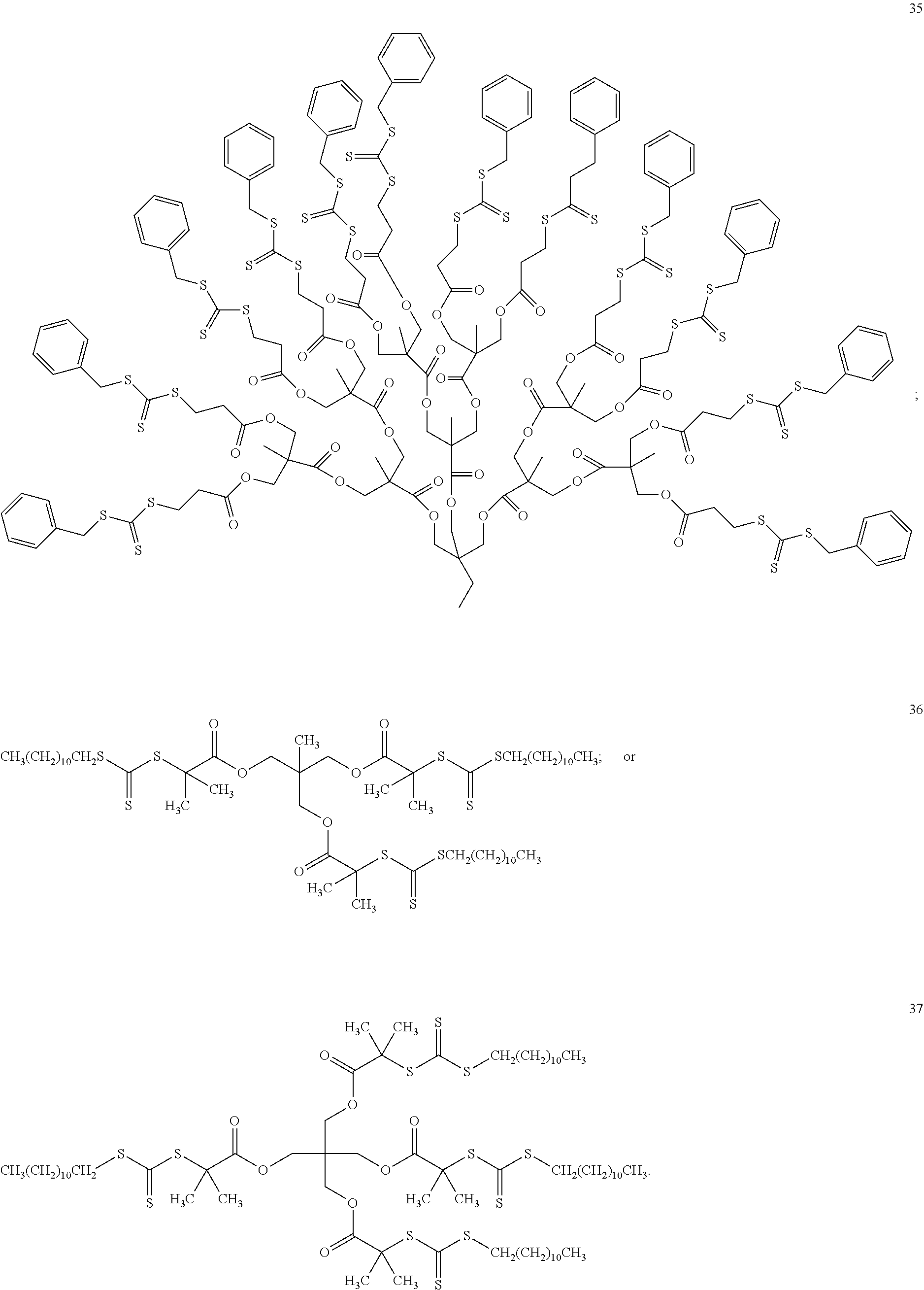
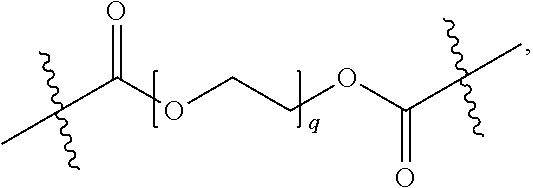

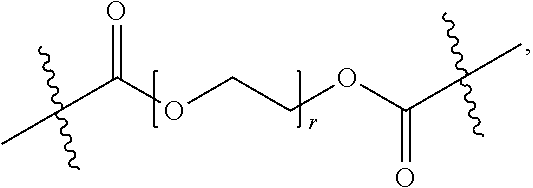


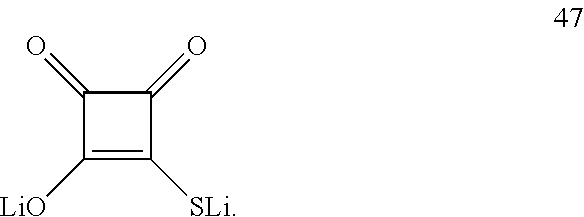


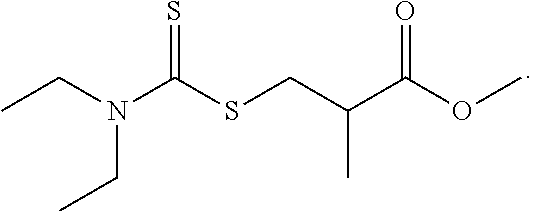
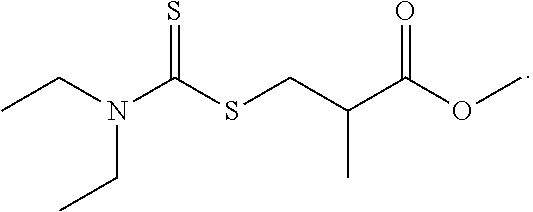


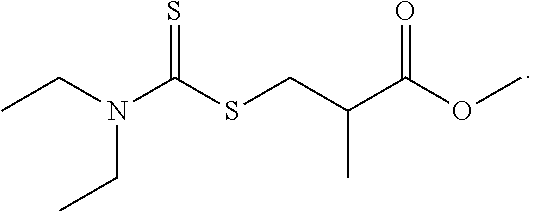

D00000
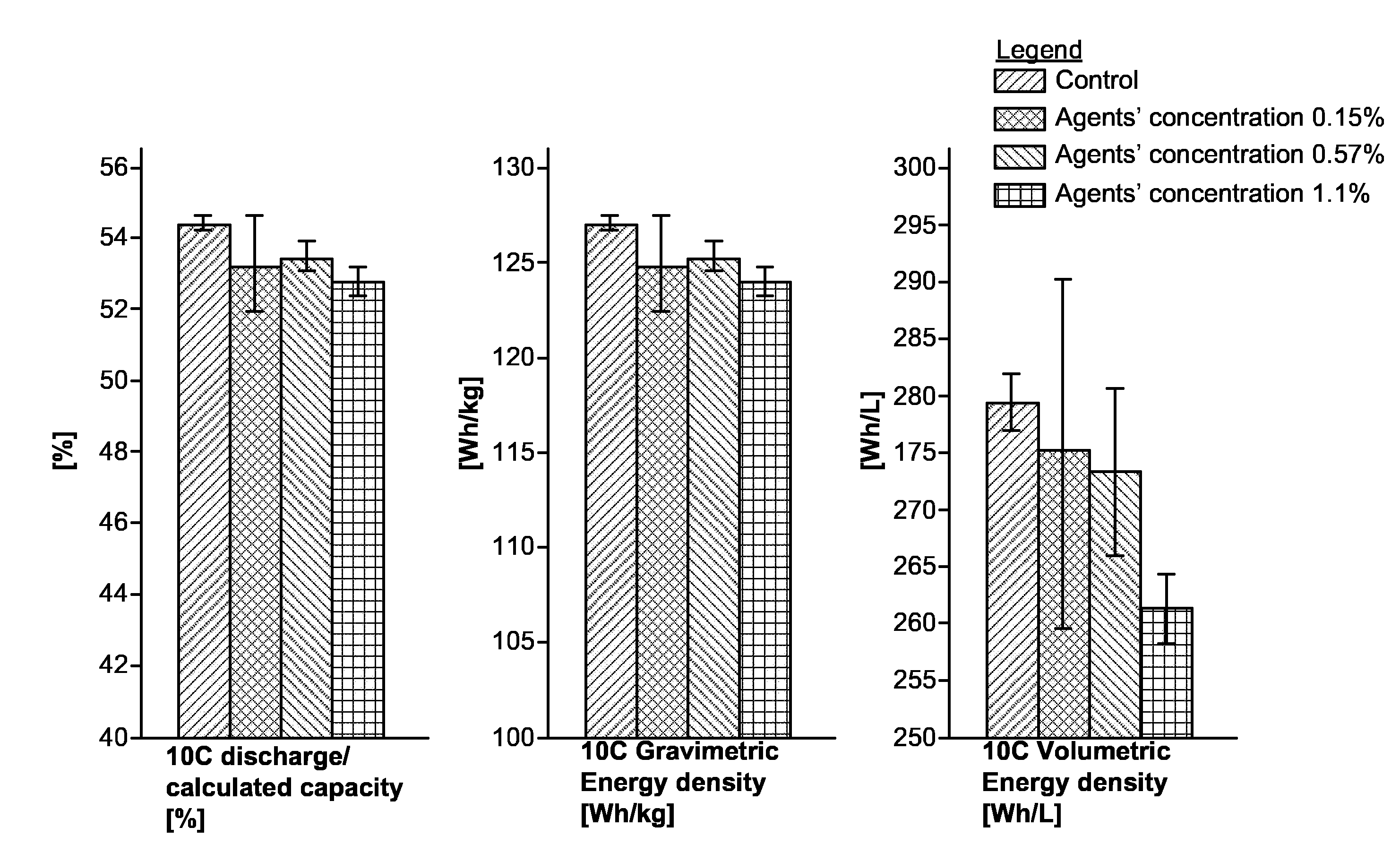
D00001
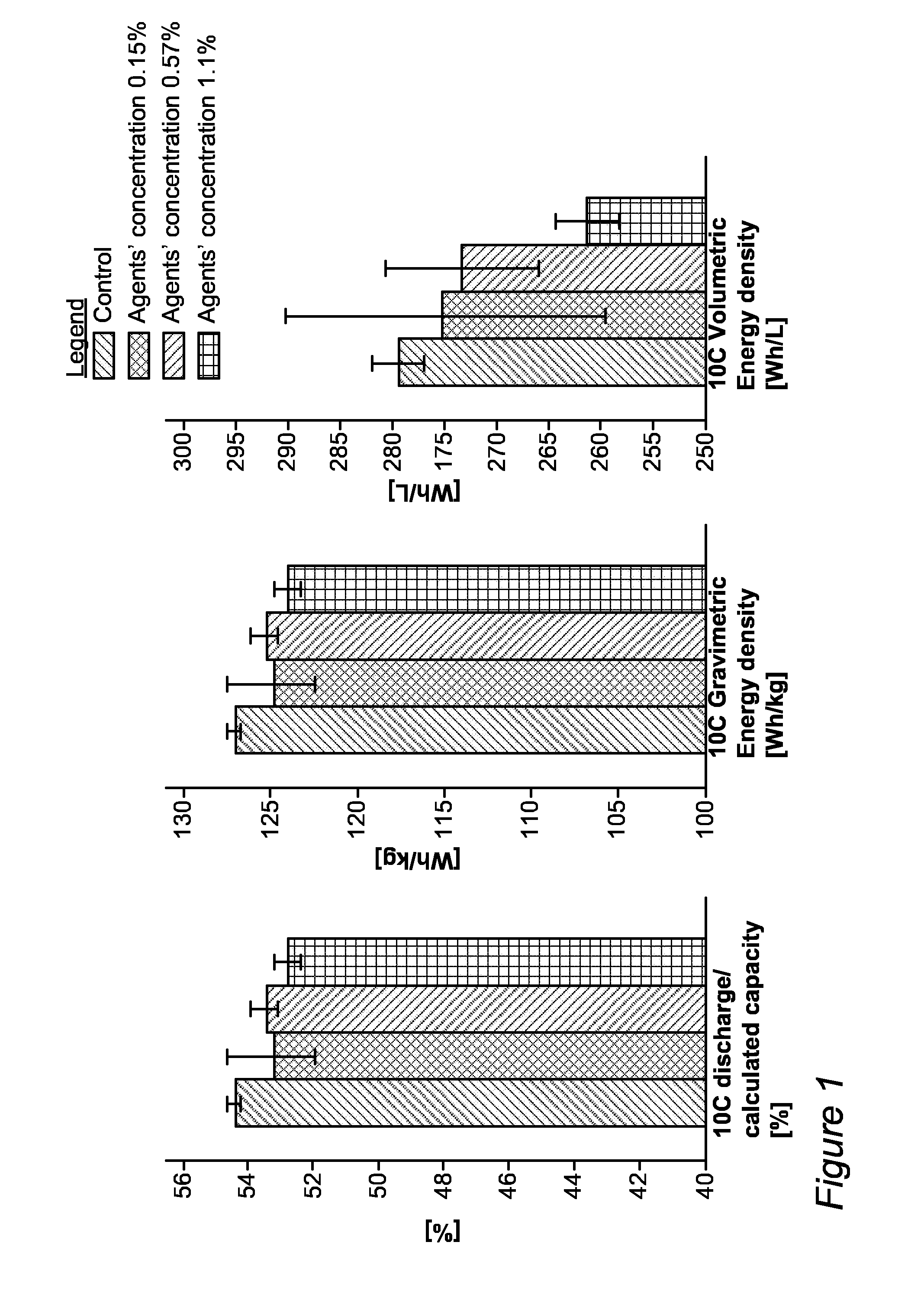
D00002
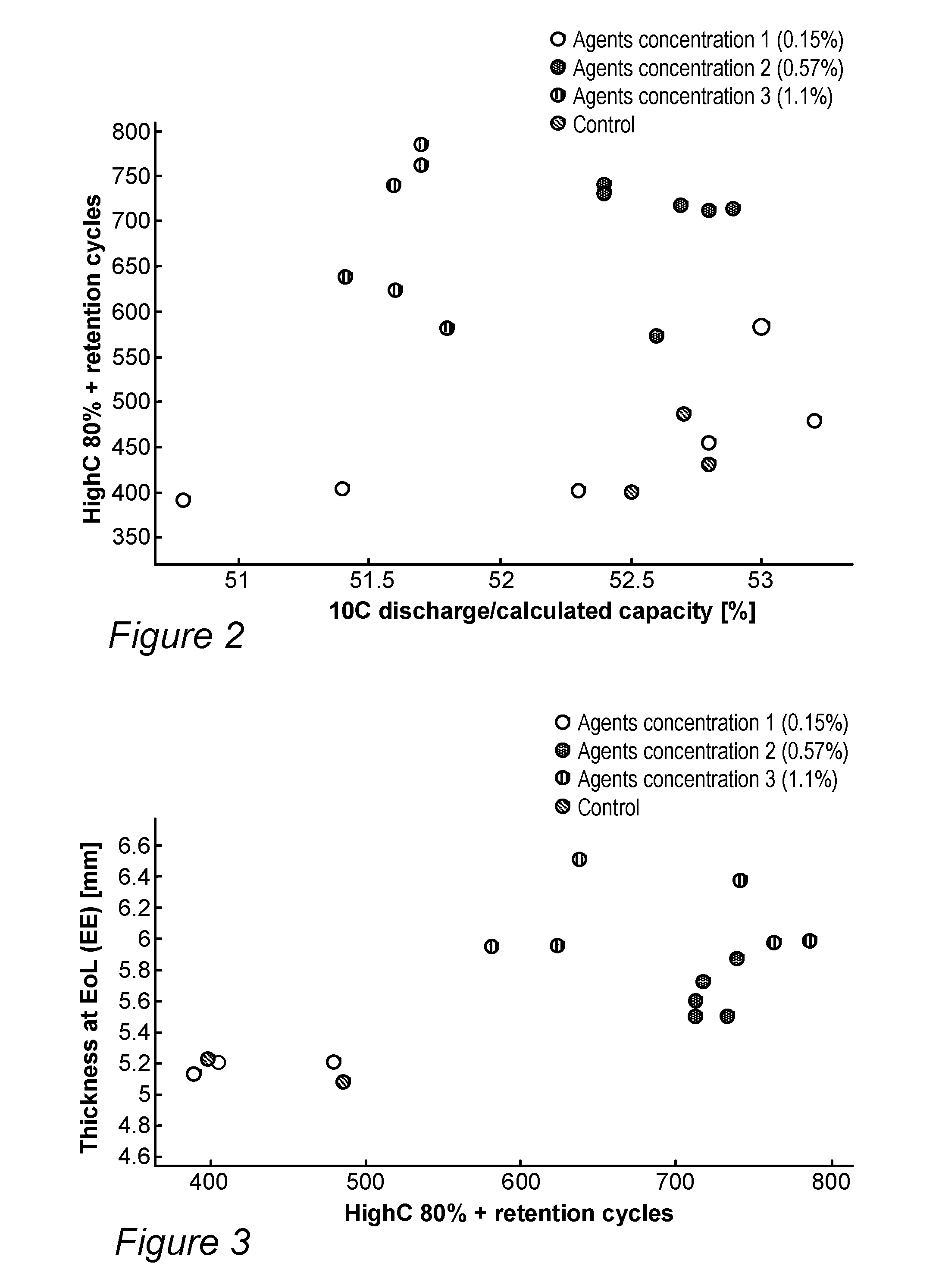
XML
uspto.report is an independent third-party trademark research tool that is not affiliated, endorsed, or sponsored by the United States Patent and Trademark Office (USPTO) or any other governmental organization. The information provided by uspto.report is based on publicly available data at the time of writing and is intended for informational purposes only.
While we strive to provide accurate and up-to-date information, we do not guarantee the accuracy, completeness, reliability, or suitability of the information displayed on this site. The use of this site is at your own risk. Any reliance you place on such information is therefore strictly at your own risk.
All official trademark data, including owner information, should be verified by visiting the official USPTO website at www.uspto.gov. This site is not intended to replace professional legal advice and should not be used as a substitute for consulting with a legal professional who is knowledgeable about trademark law.